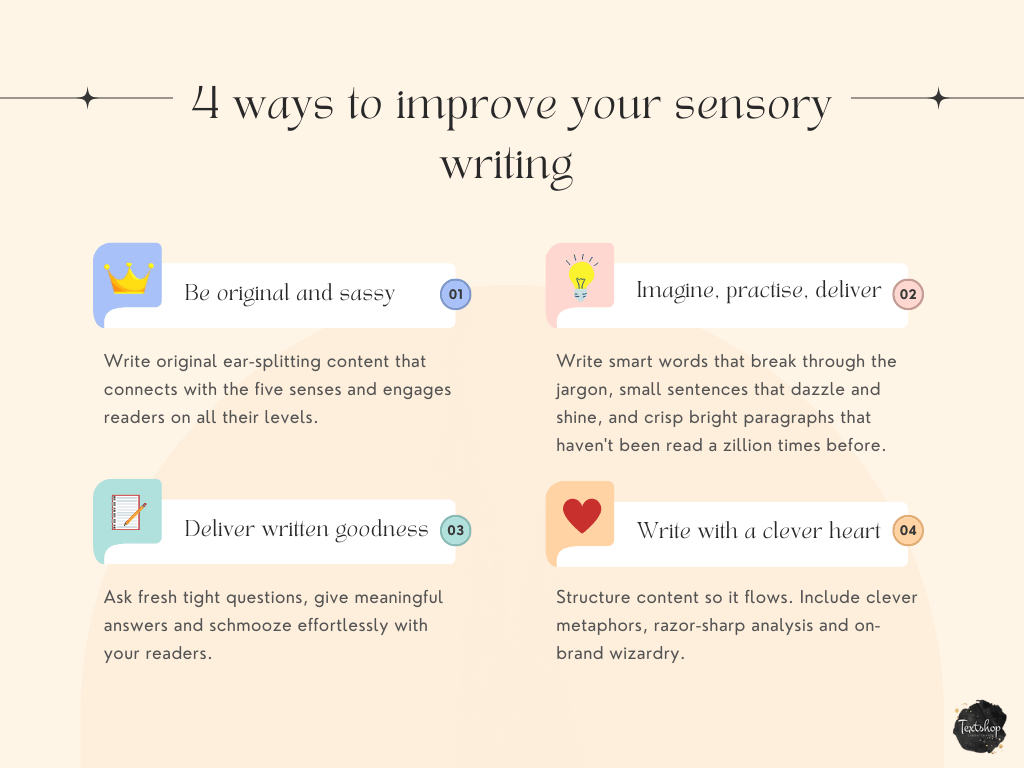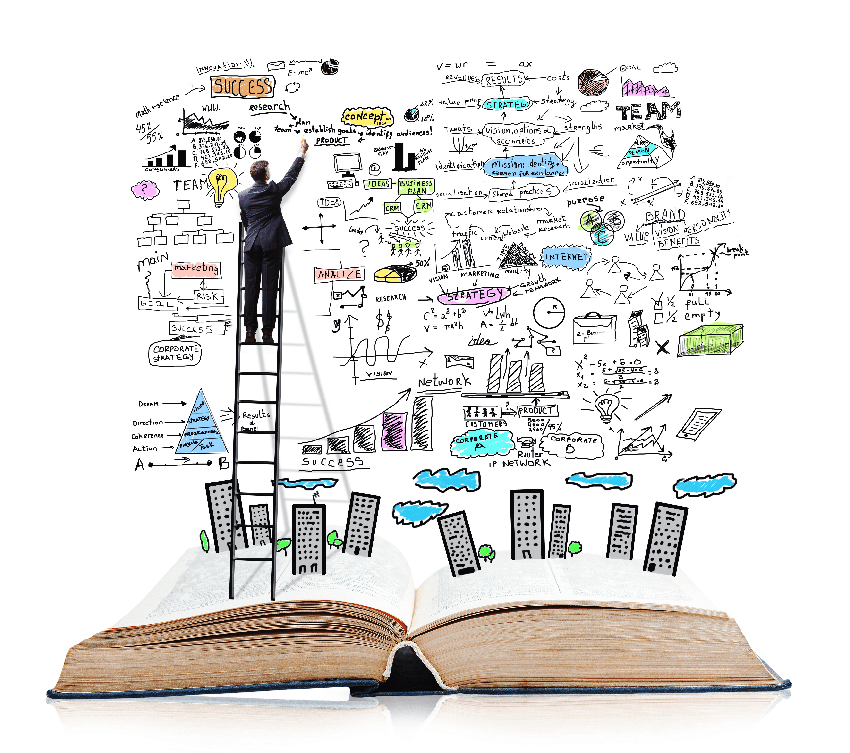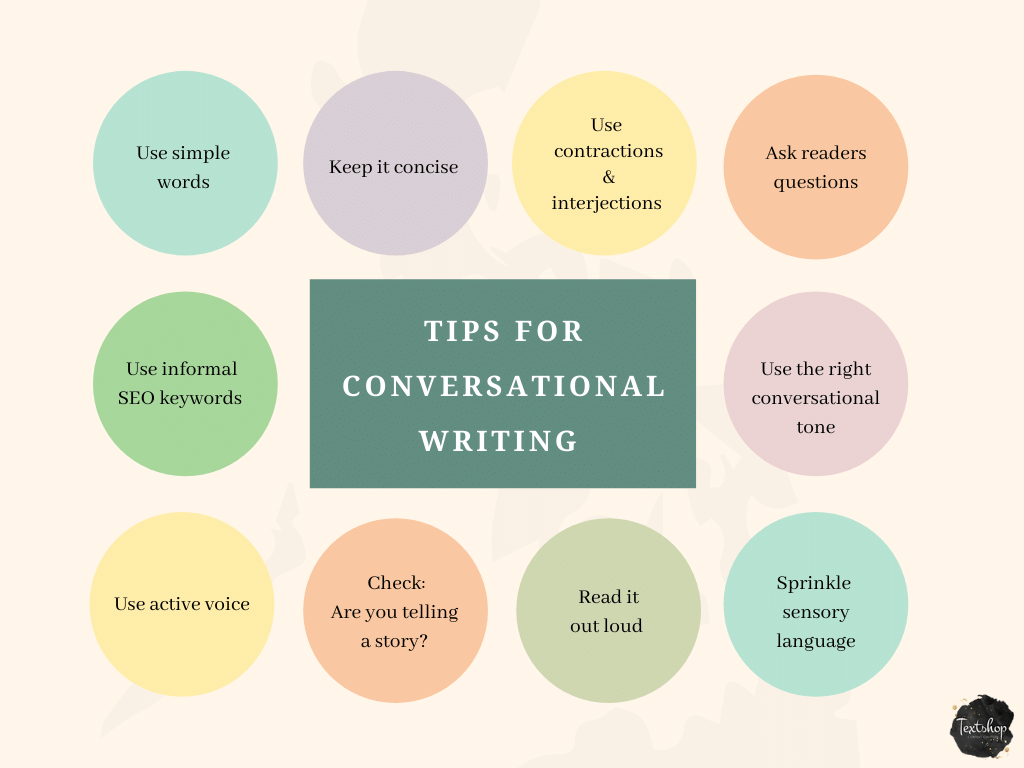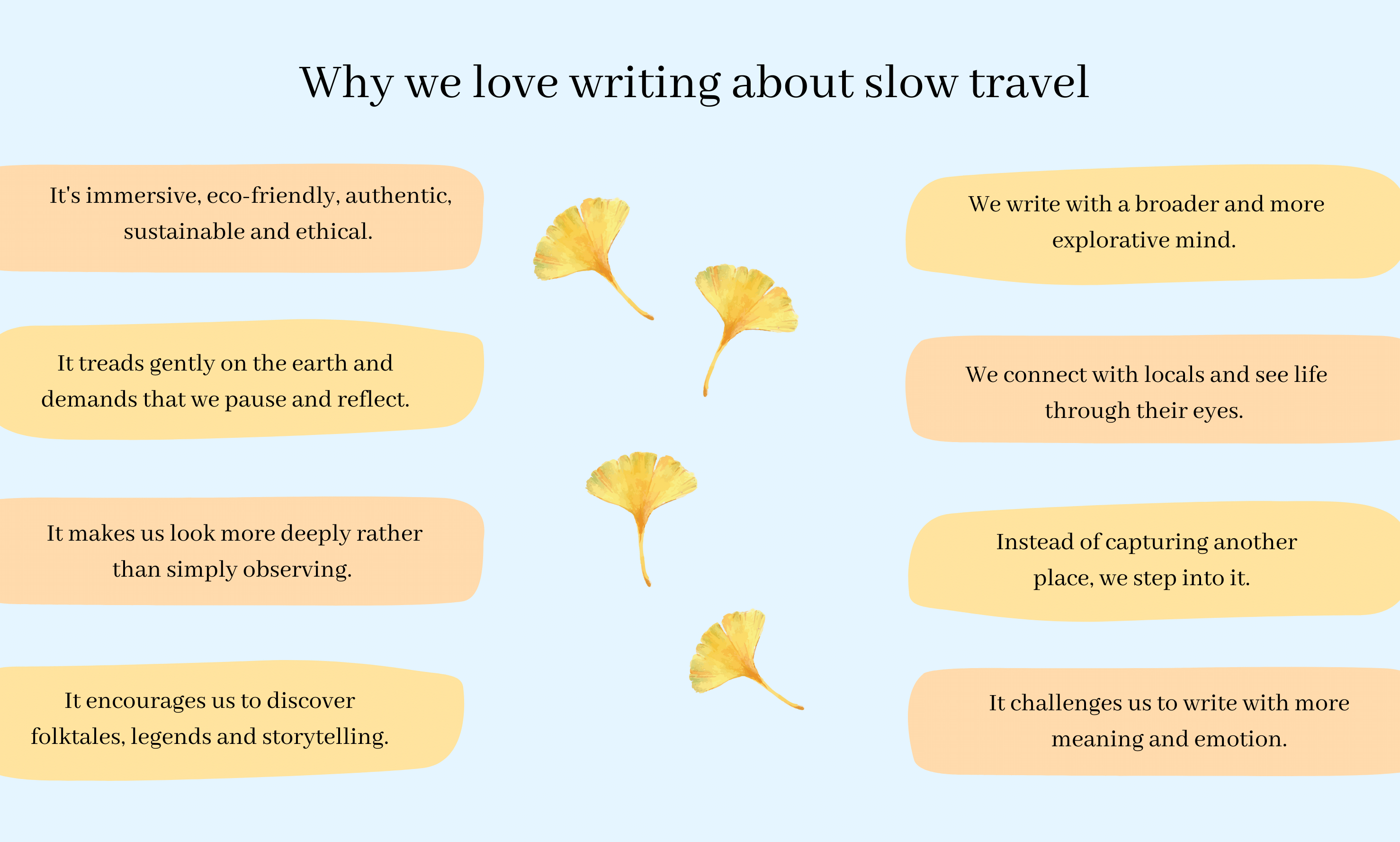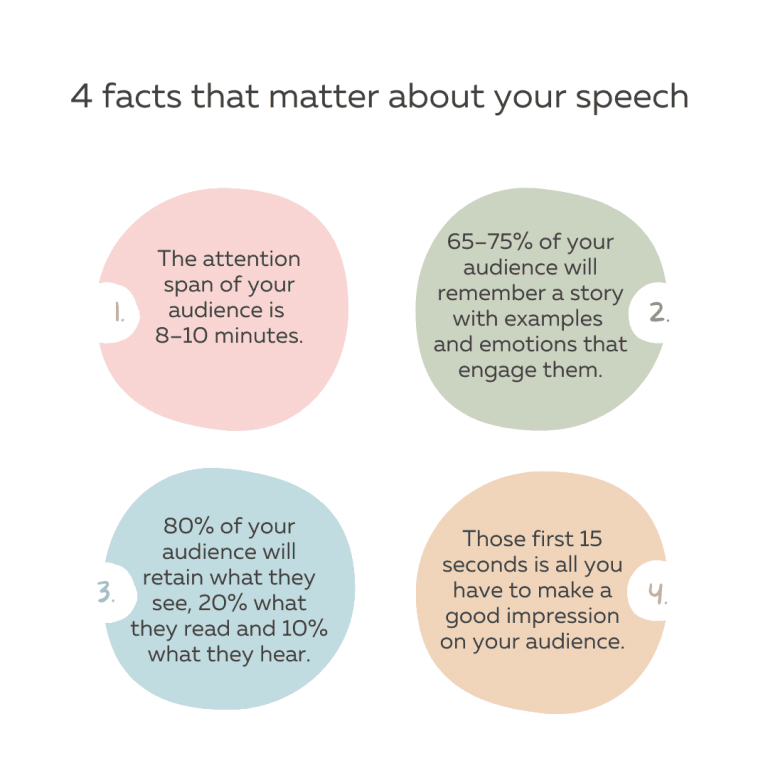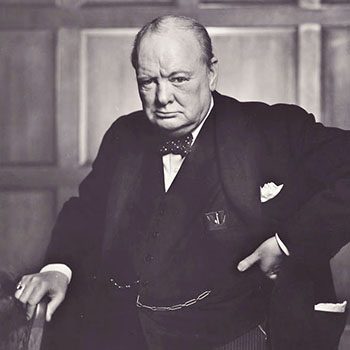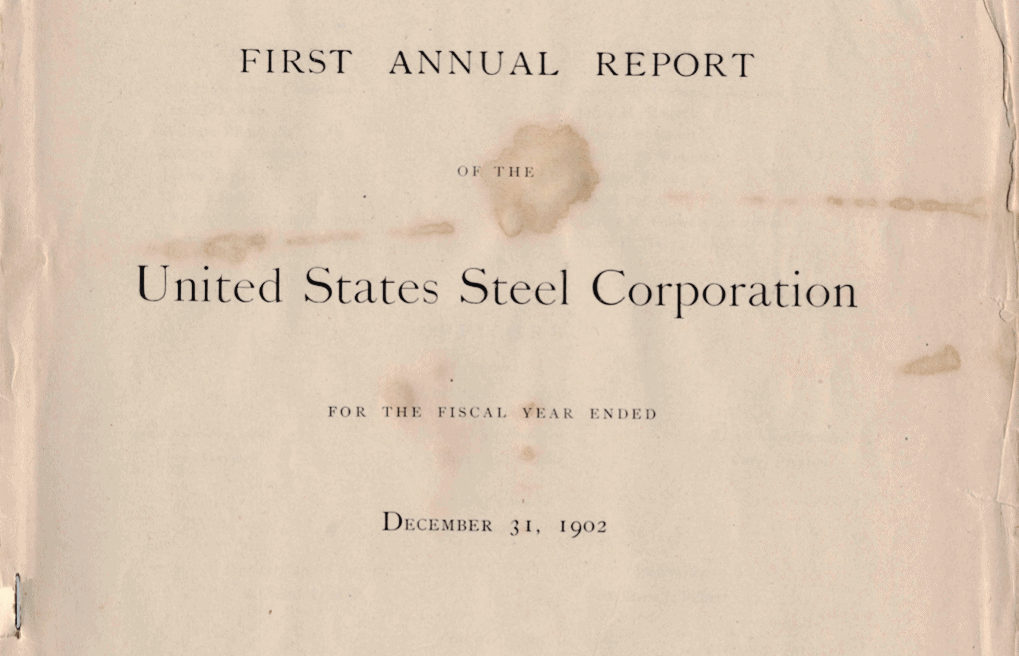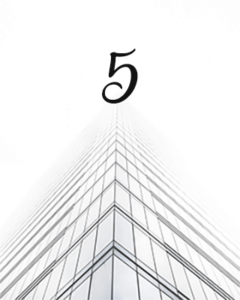How to write in a conversational tone
✼ By Sharon Lapkin
With so much content flooding the internet, it can be difficult to stand out. The last thing you want is for the lovely blog post you put your heart and soul into to end up on the 1,567th page in a Google search.
Not only that, but as writers, we want to feel good about creating original and engaging content.
One of the biggest problems with most business content out there is that it sounds like it was written by a robot.
Content that looks like it’s been churned out by a machine over and over again is a huge turn off to readers.
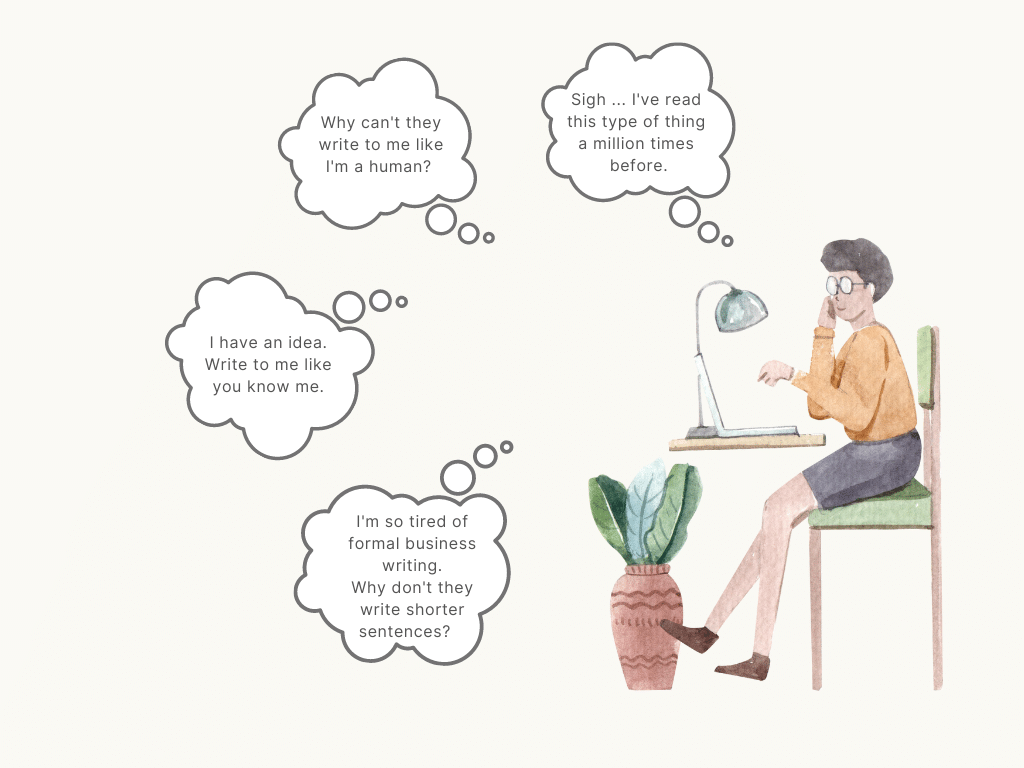
Achieving the human touch
Do you know what you have as a writer? It’s the human touch, and that’s what people want to read!
Using a conversational tone in your writing is a great way to have a creative edge over your competitors. It allows you to build an authentic connection with your readers because they feel like they’re reading something you’ve written directly to them.
Research shows that 31% of advertisements are emotion-based, and Harvard Professor Gerald Zaltman found through his research that 95% of purchasing decisions are subconscious.
Are you surprised? You shouldn’t be because this research isn’t new. Scientists have been telling us for years that emotions play an important role in decision-making. Despite this, we continue to write stiff formal business content. White papers, annual reports and blog posts that put readers to sleep.
People want to read genuine content that engages them on multiple levels.
So, if you’re looking to improve your content writing game and take your readers on a journey, it’s time to perfect your conversational tone.
Let’s go over what tone of voice is and how to use it.
What is tone of voice?
To start, we need to understand what tone of voice is when it comes to writing. According to Merriam-Webster, the formal definition for tone of voice is ‘the way a person is speaking to someone’.
Pretty simple definition, right? Well, not exactly. While this definition is helpful, tone of voice is a different beast when it comes to writing. When it comes to marketing or business writing, it’s the way you express to your audience how you feel about your brand and how they should feel. It’s how you establish a connection and the tone you choose is going to stick with your brand.
Essentially, tone of voice is the theme you’ve chosen for the content you’re writing. Choosing the appropriate tone for your audience will help you build a strong relationship with them. It will also show them there is a living, breathing human behind the writing, which is what the people want to see!
Tone of voice examples
Now that we know what tone of voice is, let’s look at some examples. We’re going to focus on a conversational tone, but before we dive in a crash course on the various types of tone can help you decide which is right for you.
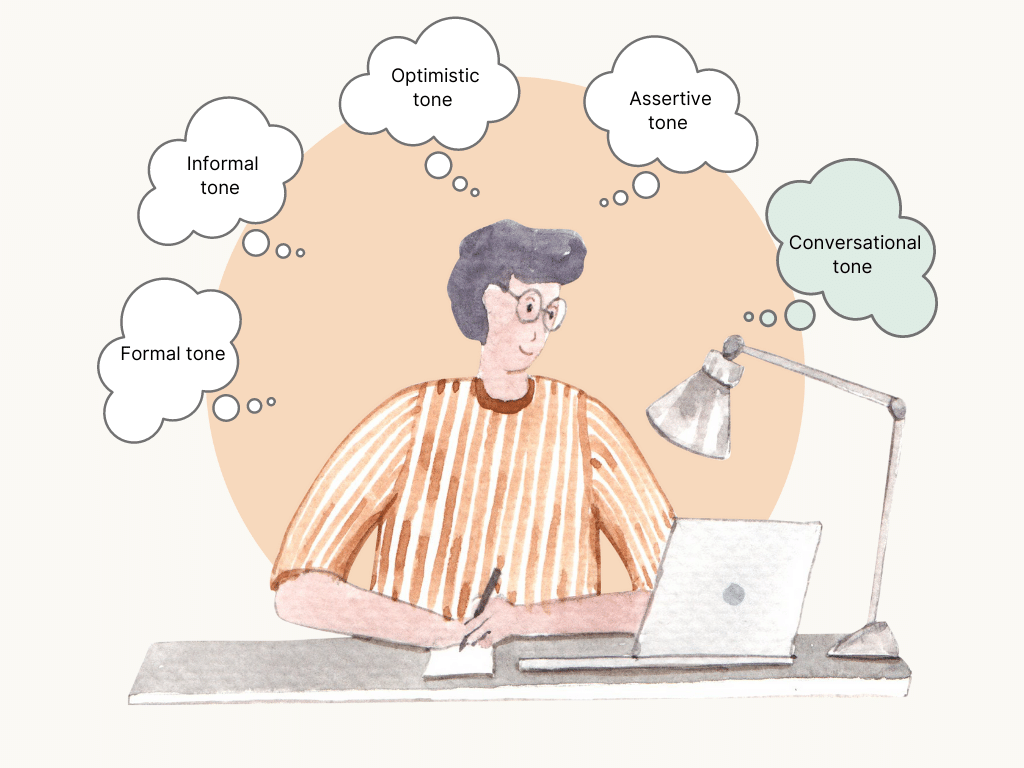
Formal tone
A formal tone is what you’ll find in a research paper or scholarly article. It’s authoritative, but can come across as complex and dry.
Think about your textbooks in school. This tone emphasises facts and avoids any contractions, making it very wordy.
When it comes to marketing, it’s wise to avoid a formal tone as people tend to scroll right past it looking for something more palatable.
Here are examples of formal tone phrases:
● According to the data, a formal tone is not the best option for writing marketing content.
● They will not be attending the concert this evening.
Informal tone
As you may have guessed, an informal tone is going to be the exact opposite of a formal tone. When you’re writing in this tone, it should be expressive and sound like you’re talking to a friend. You can use contractions and short sentences, instead of long drawn-out factual paragraphs. It’s short, sweet and to the point. Here are two examples of informal tone:
● Hi! How are you?
● We’ve got A LOT of work to do!
We’ve been taught throughout our education that this type of writing is a no-no, but in marketing and business writing, it can be your best friend.
Optimistic tone
You can combine an optimistic tone with formal or informal writing to convey a positive outlook. In marketing, you are typically looking for positivity. It’s not often you want gloom and doom surrounding your brand! When you’re trying to be optimistic try to use phrases such as:
● We’re hopeful for the future of our business!
● Don’t worry, we’ve got you covered!
Assertive tone
Using an assertive tone conveys confidence and authority without being aggressive. It’s best used when you’re trying to persuade your customers to invest in your brand. No funny business here! Some examples of an assertive tone are:
● You don’t want to miss this stellar offer, buy now to save!
● Be the success you were meant to be.
Conversational tone
Now, to go over what we all came here for. A conversational tone is an incredible skill in writing. It’s not writing how you speak, but writing in a way that makes your readers feel as if the content is personalised for them.
Don’t be afraid to have fun with it, and break out of the mould of traditional writing. It’s a relaxed and direct way of writing that will help to build your brand.

Before we show you the ropes, here are some examples:
● Hey, how’s it going?
● We have LOTS of new products for you!
Benefits of using a conversational tone
When you write in a formal tone, it can sound stuffy and uninviting to your readers.
Nobody wants to buy products or services from the formally dressed person with the corner office anymore. They want realness and to know they’re supporting a real person.
It also allows you to be creative and establish your brand. Writing conversationally will make your message stronger and more memorable. It will also:
● help you connect with your audience
● show your personality
● humanise your brand
● give your audience a human character to relate to.
How many times have you been shopping for something online, and you resonate with a brand because you can put a face and/or name to the product?
This is exactly what a conversational tone will do for you.
Customers and clients want to feel like they’re supporting a friend or family member when they engage with content, and that could be you!
Here are some of the big benefits to using a conversational tone.
You'll earn their trust
Did you know there is a psychology behind copywriting? Everything is intentional! The easier something is to read, the more likely they are to believe it. This happens totally subconsciously, so the reader doesn’t realise it’s happening.
Think about a time you’ve been researching something online and an article was filled with industry-specific jargon or big long words. Did you retain any of the information or continue reading the article? Probably not.
It's inclusive
A crucial element of conversational tone is writing in simple language. We don’t mean ‘dumbing it down’, but writing in simple words you’d use while going out for coffee. Nobody wants to be trying to decode a university thesis when they’re just trying to buy a pair of shoes online. When you write in a complex manner, it can make people who don’t understand the words feel alienated.
A conversational tone helps with SEO
This is a big one.
A conversational tone is going to use words and phrases that your audience uses. When it comes to SEO, these are keywords.
The more your content uses popular keywords among your audience, the more likely it is that your content will show up in search results.
Tips for writing in conversational tone
Alright, now we know how important using a conversational tone is, so it’s time to get started! We have some tips for you that should pave the way to you being a conversational tone expert before you know it.
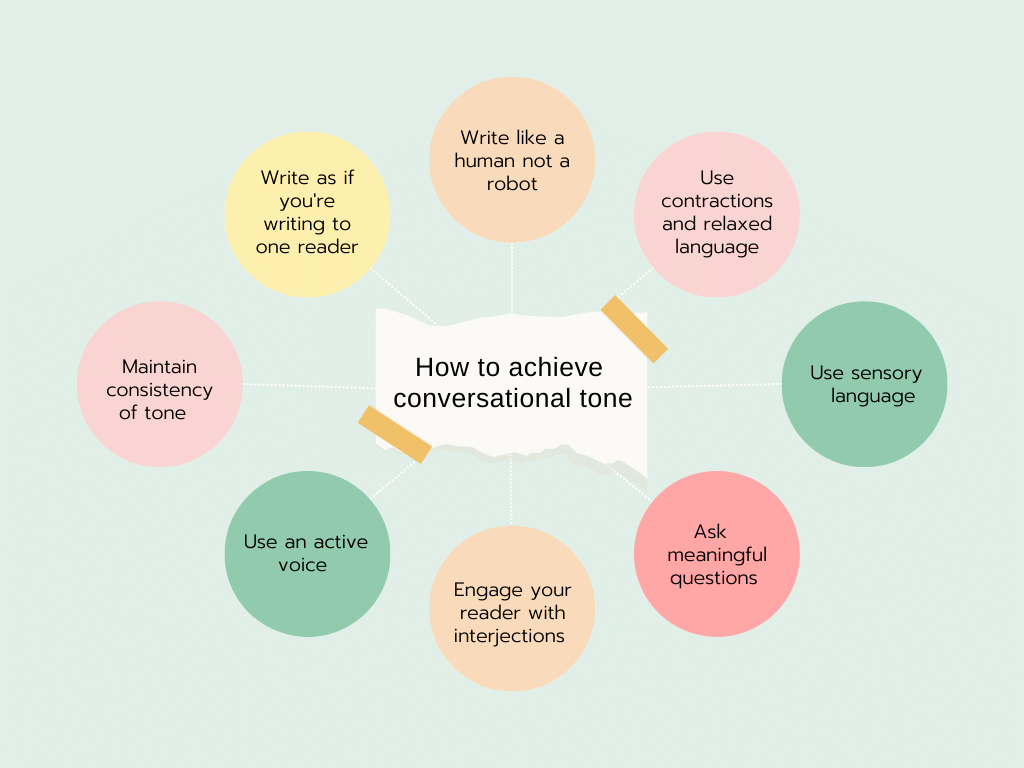
Use active voice
When you’re writing in a conversational tone, using active voice is key. Active voice is when the subject is performing the action. You should be able to clearly identify the subject in the sentence. Using passive voice can make your content sound vague and confusing when you want to sound confident in your product! Here is a simple example of active vs. passive voice:
Active voice – The cat is eating its food.
Passive voice – The food was eaten by the cat.
Now, this is a very simple example, but you get the idea. When you’re writing, you can take this and make it more complex. If you have a sentence that’s written in passive voice, you can always change it to active voice.
Understanding the difference will help you identify passive voice and save you time in the long run.
Use sensory language
Using sensory language is a crucial part of writing in a conversational tone. Simply put, sensory language uses the five senses to enhance your writing and make it more engaging. Combine this with a conversational tone and you’ve got the perfect recipe for writing that will draw your readers in!
The types of sensory words you might use to help achieve a conversational tone might include freckled (sight), abrasive (touch), splash (hearing), citrus (smell) or tangy (taste).
We’re big believers in the use of sensory language to create the right conversational tone for your business. We even wrote a comprehensive blog post about it.
Utilise short and choppy sentences
A well-thought-out long sentence can be a beautiful thing in writing. But! When we’re writing conversationally, short and simple ones win the race. You don’t want your readers getting bored while you envision yourself as the next great novelist. They’re probably reading your content on their phone trying to get a quick answer, so help them out!
Contractions and interactions are your BFF
You were probably taught to avoid contractions, but embrace them in a conversational tone. Try to use contractions such as you’ll, don’t and aren’t. Contractions also spice up your writing. Write Yay! Woohoo, or oh no! and help your readers feel at ease.
Address your reader
Hey, you! Yeah, I’m talking to you! Let your reader know you are acknowledging their existence by addressing them directly. Ask them questions and write as if it’s a personal letter. This draws people in and will keep them reading.
Want to know more about conversational tone? Watch this video.
Source: Dr Claire Lynch, 20 June 2019. The factors that affect tone of voice. YouTube.
Final thoughts
And there you have it. You’re going to be a pro at conversational tone in no time. It’s an invaluable skill to have a as a writer, and your readers are surely going to appreciate it.
Here’s more if you’d like to keep reading. To find out more about conversational writing, wander over to Our complete guide to conversational writing.
Want to put some punch into your writing? Check out How to make your writing stronger.
If you’re after some good hints on writing blog posts, you might enjoy How to write a smashing blog post.
Sharon is a content writer and award-winning editor. After acquiring two masters degrees (one in education and one in editing and comms) she worked in the publishing industry for more than 12 years. A number of major publishing accomplishments came her way, including the eighth edition of Cookery the Australian Way (more than a million copies sold across its eight editions), before she moved into corporate publishing.
Sharon worked in senior roles in medical colleges and educational organisations until 2017. Then she left her role as editorial services manager for the corporate arm of a university and founded Textshop Content – a content writing and copyediting agency that provides services to Australia’s leading universities and companies.







